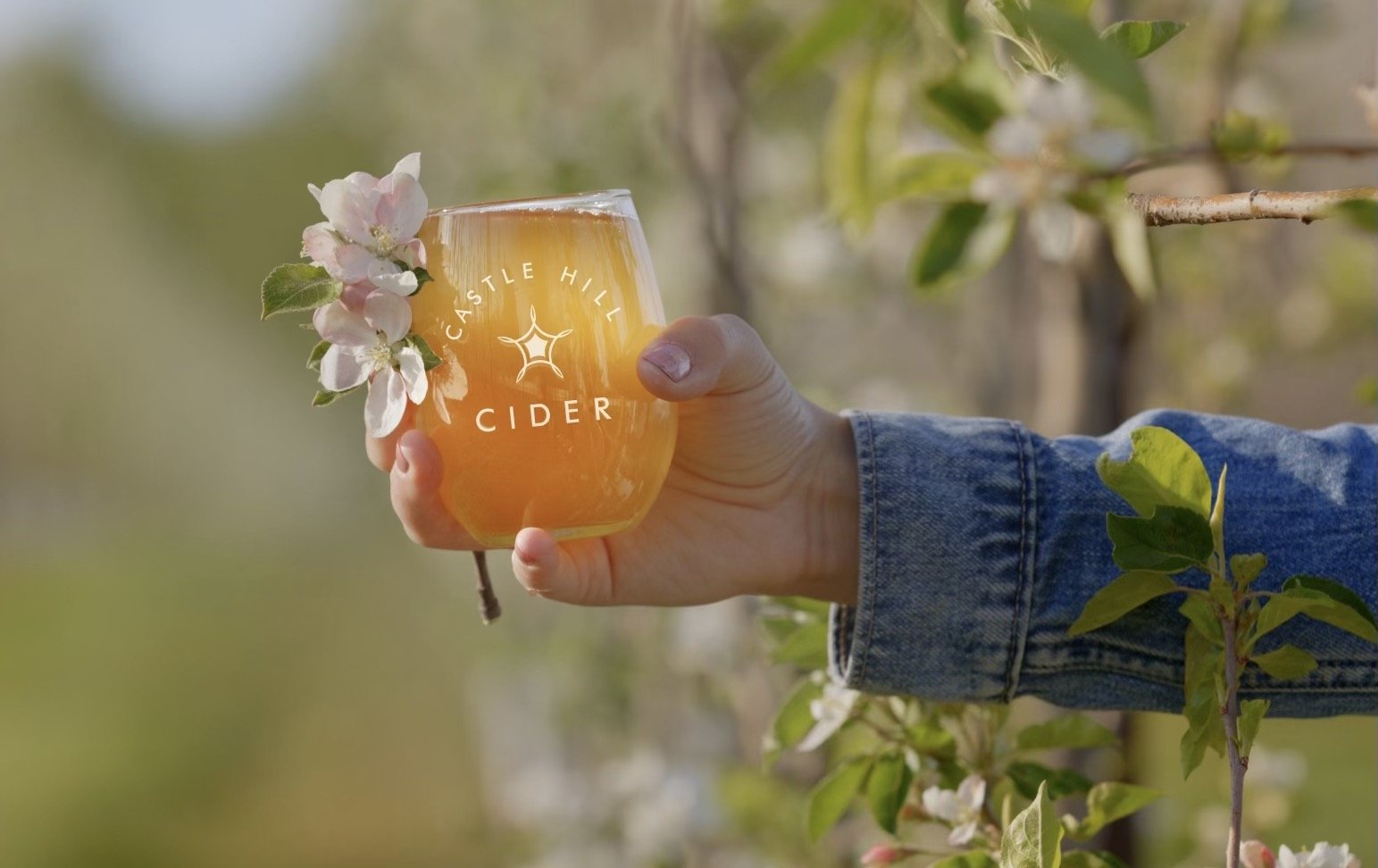
Discover Ground to Glass
Founded in 2010, Castle Hill Cider was born after owners decided to take Castle Hill back to its orchard roots. The “pervading spirit of a place” goes beyond the landscape itself. In theory, a set of apples and methods that not only work harmoniously together with each other and with this place, but also somehow convey a sense of this place – of their provenance. How Virginia terroir, history, and science combine to create a unique product - in our case - delicious hard apple cider.
History of Apples at Castle Hill
Colonel Thomas Walker, the original owner of Castle Hill Estate, was the first to bring Newtown Pippin apple scions to Central Virginia following his return from the Battle of Brandywine in 1777. The variety was planted at Castle Hill and became known as the Albemarle Pippin apple. Albemarle Pippins were quite popular and eventually turned into a major export crop for Virginia. See more of the beautiful historic home on the Castle Hill Estate in this exclusive story from Wine & Country Life. As a private residence, this is a rare look.
Orchard Architecture
Currently, Castle Hill orchards are home to some 5,000 trees. Apple varieties number more than 40 including Albemarle Pippin, Black Twig, , Harrison, Burford Red Fresh, GoldRush, Dabinett, Hewes Crab, and Wickson Crab. While the initial orchard was planted in 2009 contains about 500 semi-dwarf trees of 29 different varieties, the more recently planted Walnut Mountain orchard is a trellised high density system called “Tall Spindle.” These trees are planted at 1100 per acre and consist of the 14 best varieties we’ve planted thus far. Small experimental plantings have continued throughout. Tall spindle makes the trees easier to prune and pick while also optimizing sun exposure and airflow.
Bees, The Orchard, and Cidermaking
Watch the video below to learn more about the profound effect bees have on our orchards as well as the role of Linden trees.
Qvevri & Levity
Discover how an 8,000 year old fermentation method is utilized to create Virginia hard cider. The Castle Hill grounds host an ecosystem with all parts working in perfect harmony to create this special cider, Levity
Qvevri
Qvevri are terra cotta clay vessels which are buried underground and historically utilized for fermentation and preservation of food and drink. The Georgians began using qvevri 8,000 years ago. Castle Hill’s qvevri were crafted in the Republic of Georgia and installed on the property in 2011. These eight qvevri range in capacity from 55 to 320 gallons.
Ash Wash
Prior to adding the juice, the qvevri need inspection, cleaning, and sometimes repair. A primordial process of ash wash is employed to clean the inside of the terra cotta vessels. The Castle Hill Cider ash comes from fallen Linden tree branches in our 200-year-old Linden Grove, adjacent to the qvevri field. The qvevri is rinsed, then dry ash is applied to the walls, effectively preventing the development of harmful microorganisms in the wall pores. The ash is then rinsed from the qvevri walls, and this process is repeated. While labor intensive, utilizing the Linden ash wash method is anti-fungal, antibacterial, and a highly effective way to purify the qvevri interior.
Beeswax
When the qvevri are initially crafted, a layer of beeswax is applied to line the interior. Between the earth shifting and regular use, microfractures can occur. A wonderful sealant and naturally antimicrobial substance, beeswax is again utilized to repair any small cracks in the terra cotta. Our beeswax comes from the Castle Hill apiary, which consists of five highly productive colonies and is maintained by Elysium Honey Co. Additionally, the bees promote orchard pollination. The relationship between the bees, the Linden Grove, the orchard, and the qvevri is truly a magical ecosystem that benefits all aspects – and helps to create amazing cider.
Orchard Blend
Juice for Levity is comprised of a blend of orchard grown cider apples. The Castle Hill orchards are comprised of 4,000-5,000 trees producing around 40 varieties of cider apples. The orchards were originally planted in 2009. As of 2021, the base juice for Castle Hill Cider is pressed from 80% estate grown apples. When supplemental cider apples are needed for production, we are fortunate to have a network of Virginia growers who can lend a hand. Juice is added to the qvevri and ferments below the geothermal gradient, at about 45 degrees, for up to four months.
Wild Fermentation
One of the major differences in the overall process of creating a qvevri fermented cider is the aspect of wild or spontaneous fermentation. When we ferment in the lab’s stainless-steel tanks, yeast is added. In the qvevri, nothing is added. The yeasts come from the air, the Linden Grove, the orchards, and all around the qvevri field. Mother Nature does her thing, and Levity comes to life.

